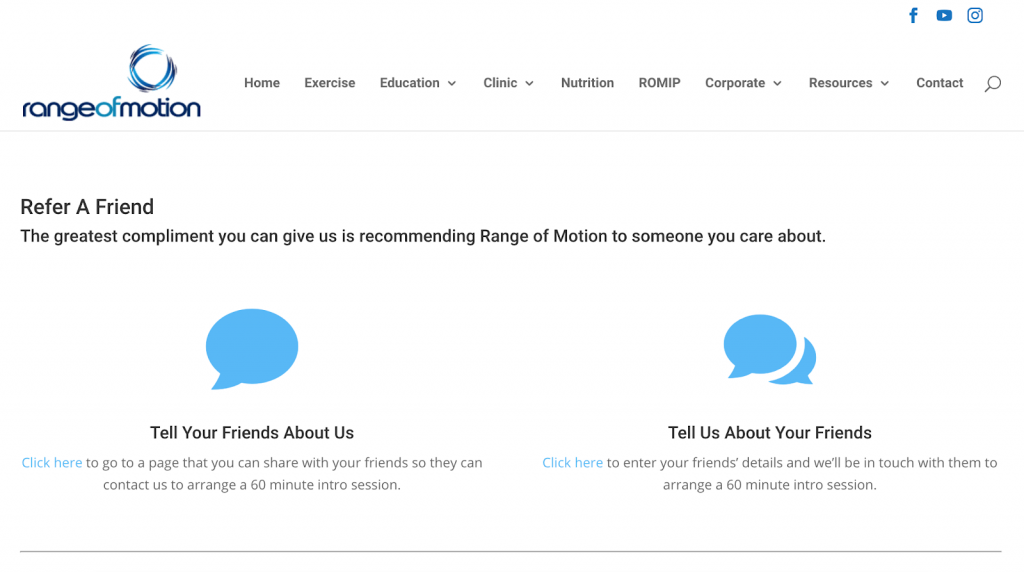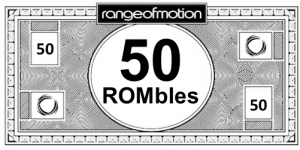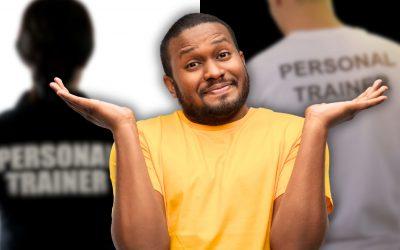19. Referral Process, Range of Motion Fitness Business Series
 There’s comes a lightbulb moment with a lot of our Range of Motion Business Mentoring clients, when they realise that being at good marketing isn’t about being good at marketing. It’s about being good at their core business. It’s about doing what it is that they’re best at, really, really well. It’s about identifying their unique selling point and delivering value to their clients that they perceive to be far in excess of the money they’re paying you in return.
There’s comes a lightbulb moment with a lot of our Range of Motion Business Mentoring clients, when they realise that being at good marketing isn’t about being good at marketing. It’s about being good at their core business. It’s about doing what it is that they’re best at, really, really well. It’s about identifying their unique selling point and delivering value to their clients that they perceive to be far in excess of the money they’re paying you in return.
So, in a way it IS about marketing, because marketing is everything we do. Every tiny piece of contact and every tiny interaction anyone has with your business… is marketing.
Too many people start the process of marketing by standing on the metaphorical street corner and yelling about how good they are. What you should be doing (instead of focussing on telling people how good you are) is to focus on legitimately being really good. Build systems and processes that offer exceptional value and deliver exceptional care.
Marketing a broken (or incomplete model) is like pouring water into a leaky bucket. It doesn’t matter how much water you pour in, it will eventually empty.
Not only do exceptional systems and care increase your retention rates, but the lead to one of the most powerful sources of new client. Referrals.
A referral is when someone who’s already associated with your business refers a friend or a loved one. And this type of new client lead is one of the strongest leads you can acquire. It’s strong because the work is done for you. You don’t have to sell the new lead on how valuable your service is to them, because your current client has already done that. They have all the social proof they need.
Referred clients also fall in to a certain category of person. They’re the sort of people who share the core values and culture of your business. How do we know that? Because they’re friends of someone already associated with your business. And people tend to be friends with people like them. Effectively, a referred client is a like copy and pasting one of your existing clients. Imagine if you could have two copies of your best client. The ones who bring most value to your business (be it financial, cultural, or simply the ones you enjoy working with). That’s what referrals do.
A referral process, like any other process in your business, should be systemised. There should be a predetermined (and well understood) set of steps.
The first step we’ve already touched on – and it’s the most important. Get your house in order. Plug the leaky bucket. Deliver exceptional value and exceptional care. Create an experience worth sharing. Make people WANT to refer their friends.
Then, the referral process can begin.
There are many ways we can run this process, but this is what we’ve found to be most effective at Range of Motion based on the research into this area of human psychology.
The purpose and end goal of the referral process is to make contact with the potential client. Maybe you contact them, maybe they contact you. Let’s cover both options.
Build a page on your website that will act as a ‘landing page’ for you CURRENT CLIENTS. This is where they’ll go to refer their friends. Make the URL something really easy to remember. On the Range of Motion website, we’ve got rangeofmotion.net.au/referafriend. Check it out:

Also on this page we let people know how the referral reward process works, and the process their friends will go through: “We really love having you and people like you as part of ROM, so we’d love to meet your friends. We offer a comprehensive free 60 minute session to give them a taste of how we can help improve their lives. Your recommendation would mean the world to us, and we’ll make sure we show you how much we appreciate the introduction.”
This landing page give two options. Either the existing client can access a page that they can share with their friends (which is the primary landing page for the exercise branch of Range of Motion), or they can click ‘tell us about your friends’ to submit their friend’s details so we can contact them. If they click the second button, they’ll jump down the page (to an anchor at the bottom of the page) to this:

Here, they can enter their friend’s details and we’ll get in touch with them to arrange a time to sit down and discuss options.
So this is the basic process of referral, but there’s a bit more to it.
Firstly, to reward or not to reward? Some people believe you should offer people a reward to say thank you for referring their friend. Other people believe this shouldn’t be done. The opinions are divided, and the reason they’re divided is that people fall in to one of two categories. Some people are more likely to refer a friend if they know there’ll be a reward. And surprisingly, some people are actually LESS likely. They’ll refer a friend just because they know your service will bring them value, and if you offer a reward, they may not follow through on the referral. This may be because they feel the referral is then less genuine, they don’t want to draw attention to themselves, or because they feel like they’ll be perceived as doing something because they were asked to, not because it was their idea.
So how do we balance these two conflicting personalities without running two different referral reward processes?
Offer a reward, but change how that reward can be used. There are numerous ways to do this, but here’s what worked very effectively at Range of Motion. We invented our own currency – ROMbles:

Based off Monopoly money, ROMbles are legal currency at Range of Motion and can be used to buy products, pay for coaching, pay for memberships, pay for events or anything else. They can also (and this is the key element to account for those people reluctant to refer in case their referral seems disingenuous), use the ROMbles towards supporting one of Range of Motion’s approved charities.
When we began this process, we put the word out to our clients to ask them to nominate a charity that was close to their hearts. We screened these to make sure they fit in with our Core Values and then published this list as the Range of Motion Approved Charities. If a client chooses, they can use their ROMbles for Range of Motion to make a donation to their choice of these charities. So they still get rewarded, but their reward is the ‘feel good emotion’ they experience by giving (which combines with the ‘feel good emotion’ they get by introducing their friend to something that will improve their life). We share these charitable donations in our internal Facebook group, so we can celebrate their generosity, but also as a way to draw the Referral Reward Program to our clients’ attention.
So how do people earn ROMbles? Well, if they send us their friend’s details, they get five ROMbles. If their friends come in to sit down with a member of our staff, they get another five ROMbles. And if that friend becomes a paying client, they get a further 50 ROMbles, for a total of 60 ROMbles.
This is the referral reward process we’ve created for Range of Motion. But a system like this is useless if it’s not used, so it’s very important your clients know how the process works. There are a few initiatives we can use to make this happen:
- Create a website custom audience in Facebook Ads that’s made up of the email addresses of your clients. Run an ongoing Facebook advert to your clients with the heading ‘click here to refer a friend’. It will link to your referral landing page. Because this audience will be so small, your clients will see this post regularly for a very low cost to you.
- Every three months, schedule to post in your internal Facebook group asking for referrals. If you don’t ask, you won’t get!
- Build in to your initial client automated email chain (which all new clients should be a part of) an email asking for referrals. This should be delivered to them three to six months into their journey with you. Again, link to the referral reward landing page.
- Have in-house posters and advertising, asking for referrals, with the URL of your referral page a feature.
As long as you have developed watertight systems in your business, and you deliver an exceptional client experience, a referral program can be a major source of ‘pre-sold’ new clients for your business. Prioritise your service, then go after those referrals.




